Guest post from Fred Ende and Meghan Everette, authors of Forces of Influence: How Educators Can Leverage Relationships To Improve Practice.
Every summer we talk about starting the school year off right. This year feels drastically different, and it should. Starting the school year off right this year doesn’t just mean reopening for the year; it also means reopening for so much more.
COVID has shaken us to the core. Some of us have been directly impacted through illness or death. For others, the impact has been less severe, but no less serious. Our lives are different today than they were six months ago. And what the next six months will bring is unknown. While we have heard the term “challenging times” more often than we would like to admit, those two words hold significant truth.
Regardless of what our opening plans might look like, the foundation of each and every one will be people. Whether teaching or leading in person or remotely, our communities will be looking to reconnect as well as reopen, and we have a responsibility to make sure that the relationships we’ve needed throughout the pandemic grow stronger, and the relationships we will now need can be built fresh.
Influence and Leverage
Relationships become even more necessary and powerful when considered in the context of influencing others. Fostering relationships smooths the way to exert influence over others to help drive change. The truth is we want or need something from all relationships, even if what we want or need is as simple as love or acceptance.
Influence is about the ability of someone, or something, to change actions, ideas, or character. It is what we do daily in teaching, learning, and leading. Leverage is the ability to influence a person, product, or practice to the maximum. Products or ideas can influence, but it takes a human factor to leverage relationships. It’s taking influence, sometimes even that influence afforded us by our position, and racketing it up to get the most out of it.
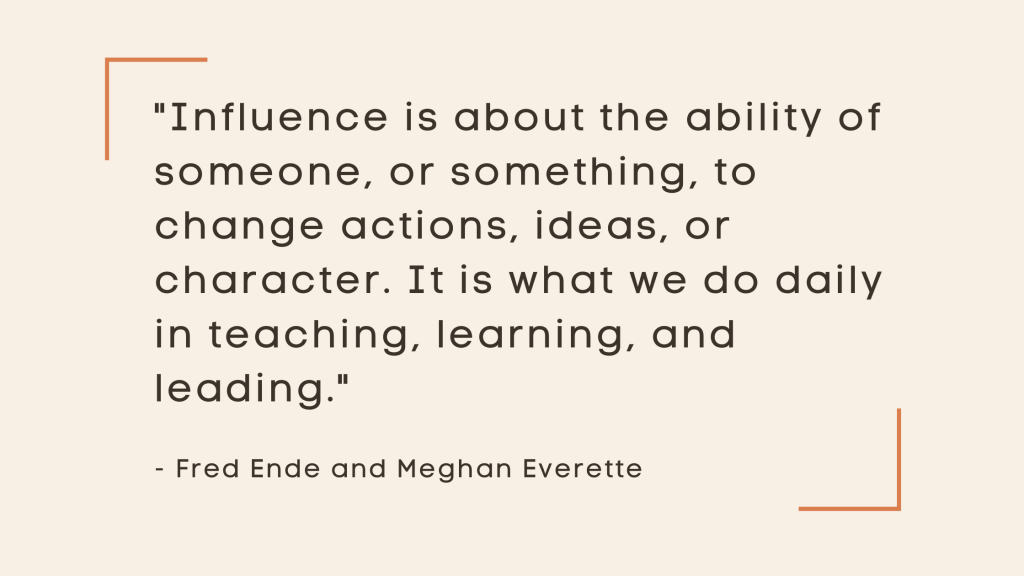
Sure, a principal could compel teachers to do something based on their positional power, but a leader would leverage relationships that they have built without forced compliance. The same can be said of a teacher that leads because they are the adult, versus a teacher that knows what drives each and every student. Consider a situation when someone has leveraged their influence to drive you to be better, and how that person used their relationship to leverage influence for a positive outcome. It’s something we can all learn to do.
What Are the Forces of Influence?
We have spent a significant amount of time thinking about the relationships we form, and how we can influence others (and how others can influence each of us) to do great work. In a time of unanswered questions, it is good to know that there are ways for us to leverage relationships to support those we serve. We see these as the Forces of Influence.
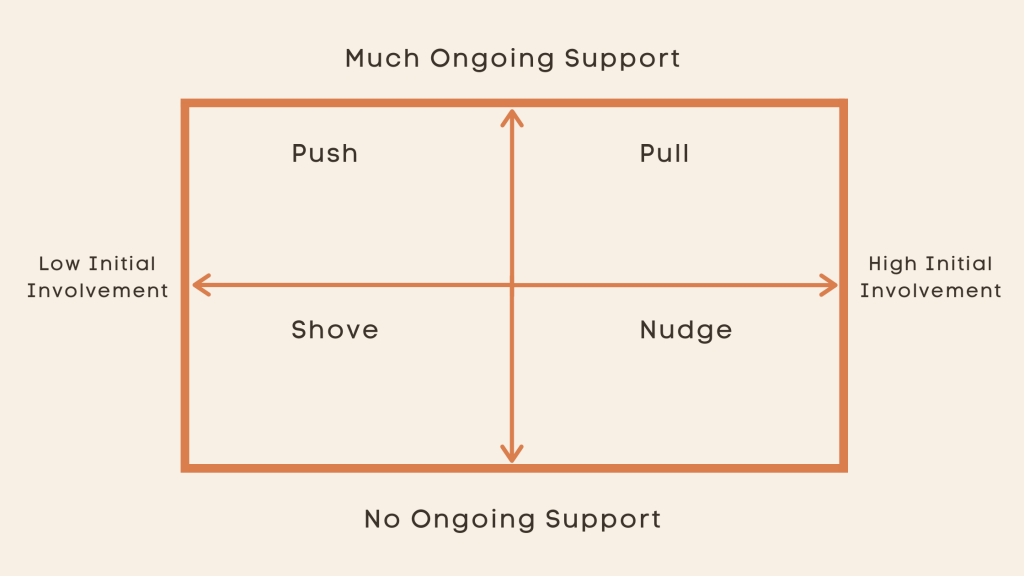
The Forces of Influence are simple in idea and challenging in execution. Over the course of the rest of this blog, we will discuss each Force: Pull, Push, Nudge and Shove, and share one way to leverage relationships by putting each of them into practice as we prepare for reopening. What sets each of them apart is where they fall on the spectrum of time investment on the front end and continued coaching and support throughout the application of the Force.
How Do You Usually Influence Others?
Do this short experiment. Draw a horizontal line. Place where you would fall on the line when the left side is jumping right into new ideas (you like to brainstorm and put ideas on the table, for instance). The right side is the person that plans for every contingency: you like things planned on the front end.
Hold that mark in your mind. Now draw a vertical line that bisects the horizontal one. This line represents where you fall once a decision is made. At the top of the line, you like to be involved every step of the way until the end. At the bottom of the line are those who are happy to let others run with their own ideas. Where do your lines cross?
This is how you usually leverage relationships to influence others. You either tend to push, pull, nudge, or shove with different degrees of intensity and crossover. Let’s examine each of these Forces.
Pull
Pullers are the strategically placed friend that provides a kick start and ongoing support to make a change. Think of the friend that grabs your arm, pulls you to the dance floor, and jams along with you. Pulls follow the coaching model of establishing a trusting relationship, planning, and learning alongside the person you pull. A pull is a Force of Influence that requires heavy investment of time and energy throughout its entirety.
Much like a pull in a tug of war, we are engaged in the process throughout, supporting others as we move in the same direction. Pulls are tiring from the exertion we are forced to put into them, and because of that, engaging in more than one or two at a time is a recipe for burnout for everyone involved.
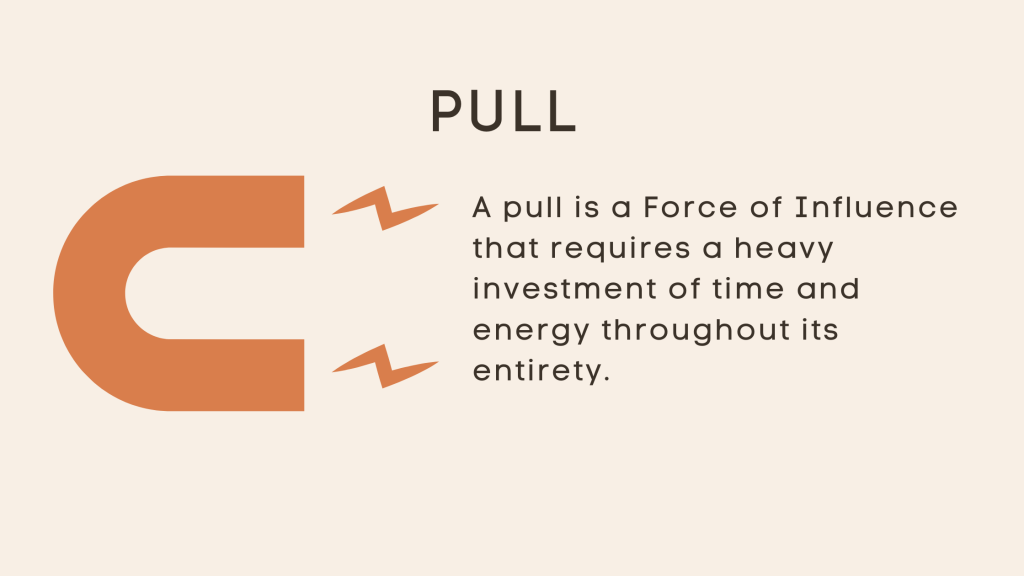
When thinking about investing in a pull, knowing where people are at the start is incredibly important; a pull planner, like the one here, can be helpful to making sure that you have dotted your “i’s” and crossed your “t’s” before getting started. Note that a number of resources related to the Forces can be found here, if interested.
Push
The push is a Force that most of us recognize well. We have all been pushed many times before. Student teaching is a push. We are left to our devices, but waiting in the wings is someone to help support us as we continue to grow.
In a push, there is less investment on the front end, and much more sustained assistance throughout. Pushes work best when we want to cultivate someone’s growth for the long haul.
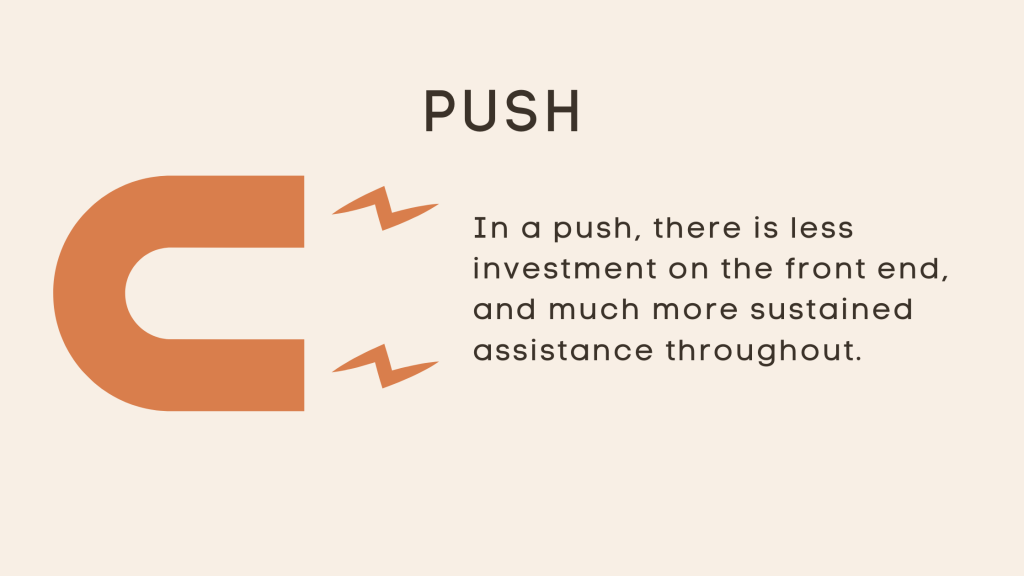
We put our energy into the support element of the relationship, and we also recognize that the person has enough skills to fly on their own. Even if they don’t know it yet, we do. That is why with a push, our coaching and support tools have to be ready to go. We must be willing to be active listeners, to allow for failure and help those we push get past it, and we must welcome the frustration that comes with people charting their own course.
While we might want to have a heavy hand in the process, in the best case scenario, we keep a light touch. For example, imagine the potential scenario: all classrooms must immediately start online teaching. If this is done as a push, the pusher must be there for the long haul. This person would provide ongoing support and guidance during the change. While the responsibility of the change remains on the pushee, the responsibility of the support remains on the pusher.
Shove
Shoves sound aggressive, but they don’t have to be, though they do work best when used sparingly. Like all the Forces, they are dependent on strong relationships, but unlike the other three, they are the one Force that can end in utter disaster.
Shoves need to be used when changes will only happen if people are faced with a “do or don’t” situation. Often, success in these moments leads to growth beyond imagination. And, lack of success can often negatively impact people to the point where they can’t return to “normal.”
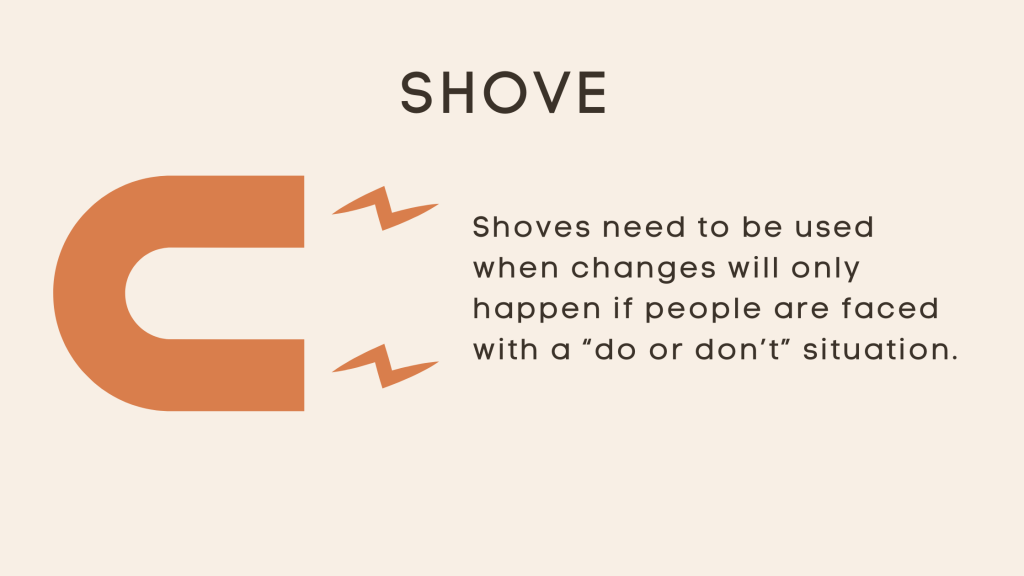
Because of this, shoves should only be used when you, as the shover, can deal with either an outcome of success or failure, and when you can handle a relationship that becomes stronger than you ever thought possible or where it degrades or disappears entirely.
Shoves tend to happen when there is a time factor involved. There is a sense of immediacy to a shove. And they work well when attitudes and beliefs are directly aligned to the ask, but they can have a greater risk of damaging relationships.
Nudge
The nudge is the most subtle of the four Forces, primarily because significant work is used at the start and then it becomes hands-off; whatever happens happens. A nudge is applied when we want others to be able to come up with a decision on their own. We may leverage relationships through influencing the thinking of others, but we are not actively engaged in supporting the process from start to finish.
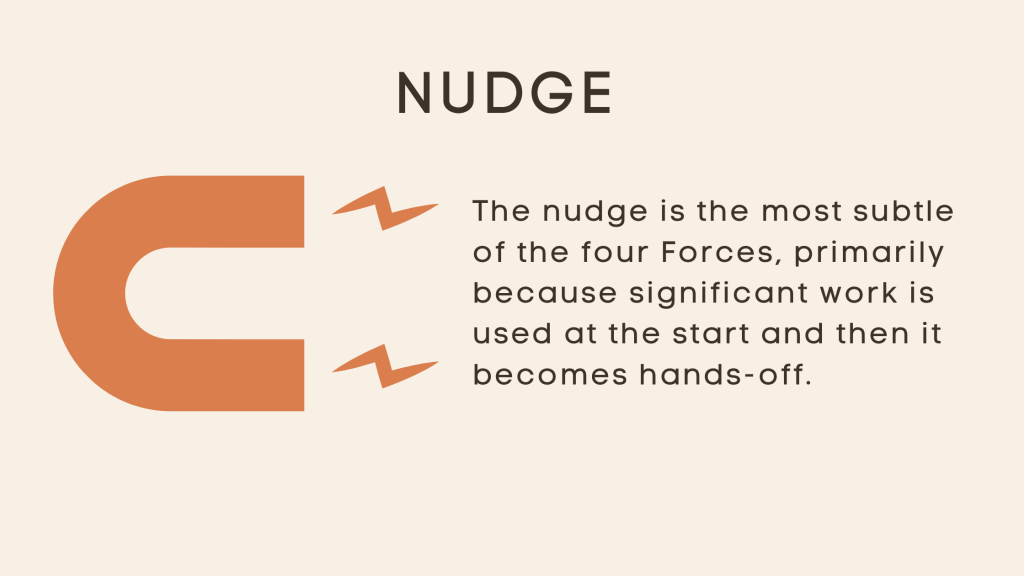
Nudges work well in situations where positional power is at play. While we might not push or shove a supervisor, we can effectively nudge those who lead us. A good rule of thumb for a nudge? If the person we are nudging realizes we are doing it, it isn’t a nudge anymore.
Think of how promoting blended learning models by dropping off articles or offering a book study could influence teachers subtly over time, but as a nudger you have to be okay with letting the work develop on its own, usually without your continued involvement.
If the forethought and time allowed for that type of nudge prior to the pandemic, it may have had a chance to succeed, but if there are decisions that need to be made a certain way, it may be too risky for such a subtle move. This nudging tip sheet provides some food for thought as you attempt to build nudges into your repertoire.
Final Thoughts
No one can operate in just one quadrant all the time. It would lead to burnout for someone who is acting as a puller, and burned bridges for someone implementing regular shoves. We also need all personalities in our organizations to make Forces run.
Knowing ourselves and knowing how we leverage relationships to drive influence is essential. The Forces of Influence present a toolkit for learning and leading moves. And like a great set of tools, we should always have them at the ready for when we work with others to accomplish great things.
Fred and Meghan’s new book, Forces of Influence, can be purchased online.







Add comment